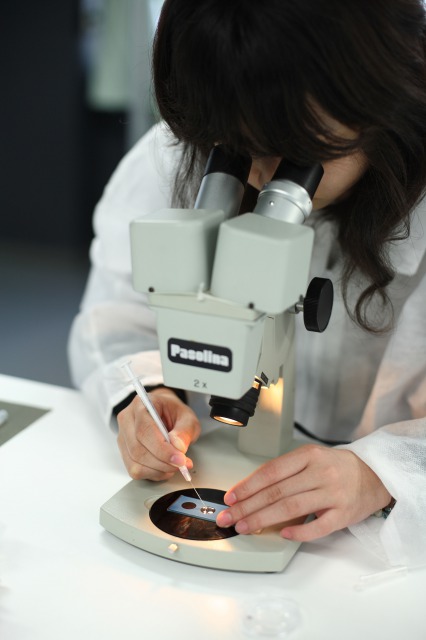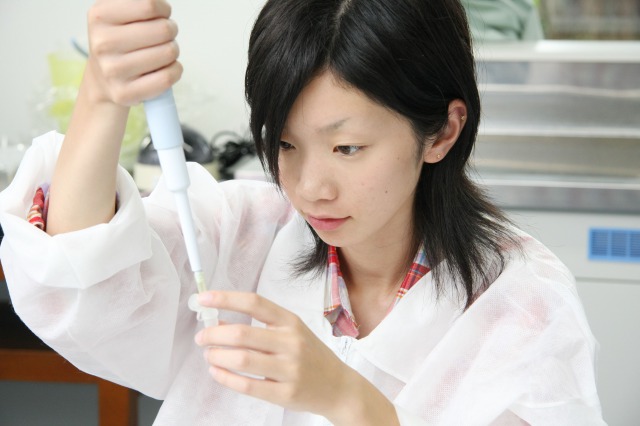Our coverage of Life consists of two projects (3 sessions).
(5) The origins of life: Fertilization and cell cleavage in worms

In this experiment, you will use a microscope to observe dynamic cell cleavage in a fertilized egg, initiating the process of bodily growth. As experimental subjects, you will use Caenorhabditis elegans worms. Mature worms (a single generation spans 3 days) contain eggs at various stages of development—from unfertilized eggs to eggs just prior to hatching—allowing the entire reproductive process to be observed in a single creature. In particular, the initial cleavages after fertilization (egg segmentation) proceed at intervals of 5–8 min, during which time one can observe dynamic variations such the cleavage of cell nuclei and of cytoplasm. The discussion stage of this project offers students an opportunity to compare what they have observed to the processes of fertilization and cleavage in humans, lending insight into to the origins of human life. In the process, students are exposed to notions such as embryonic stem cells, identical twins, infertility, diagnosis of fertilized eggs, and in vitro fertilization.
(6) DNA analysis: Using genomic DNA to distinguish different types of rice (2 sessions)

Not a day goes by without newspaper articles reporting the use of DNA analysis to match children with parents or to assist in crime investigations. In this experiment, you will conduct your own DNA analysis. In an effort to make things easier to understand, we have designed this experiment such that your test subjects will be different types of rice (including the koshi-hikari and sasanishiki varieties). Each student will be given a single grain of rice; one session will be devoted to crushing this grain into powder, extracting its DNA, and amplifying via PCR, and the next session will include analysis by electrophoresis, staining, and imaging. Because we will use commercially-available kits for DNA extraction, many of the steps are described in the manuals accompanying the kits, and some portions will have the feel of “experiment by recipe” involving black-box procedures. Nonetheless, we have designed the project to ensure that students themselves must think through the most important points.